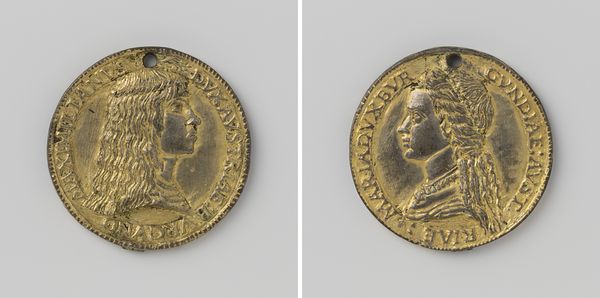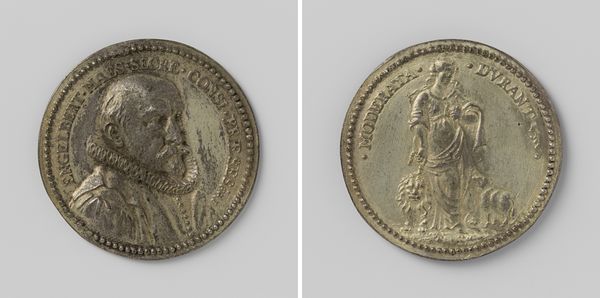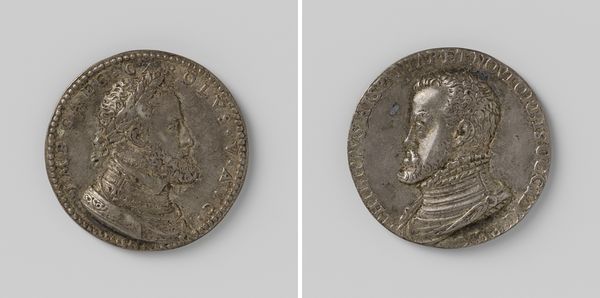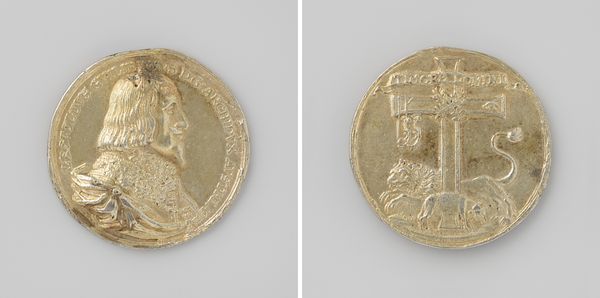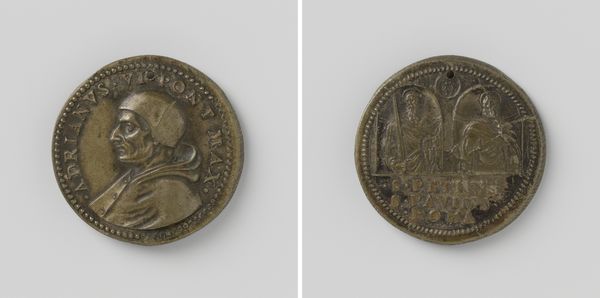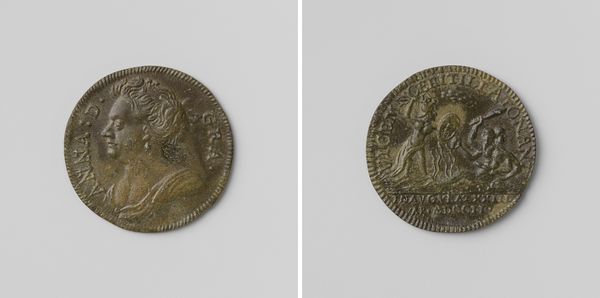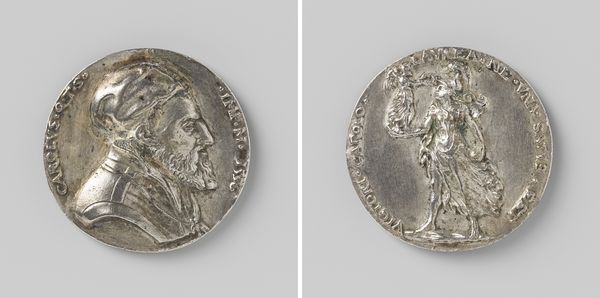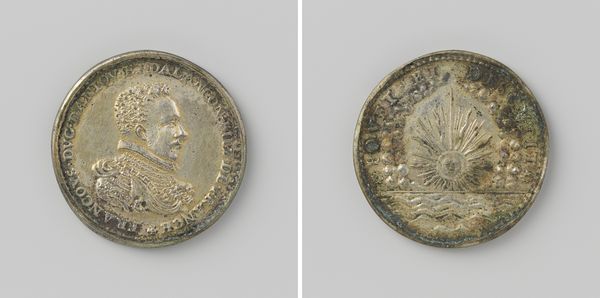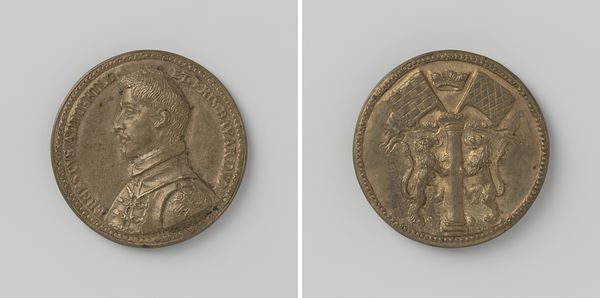
metal, relief
#
portrait
#
metal
#
relief
#
figuration
#
11_renaissance
#
history-painting
#
northern-renaissance
Dimensions: diameter 3.3 cm, weight 20.59 gr
Copyright: Rijks Museum: Open Domain
Curator: Let's examine this intriguing Northern Renaissance piece—a medal made of metal, dating back to 1536. It's a relief depicting "Maria van Hongarije, landvoogdes der Nederlanden"—Mary of Hungary, Regent of the Netherlands. Editor: Immediately, the stark profile view and somewhat austere attire of Mary strike me as an interesting contrast to the lush allegorical scene on the reverse. There’s a tension between her controlled image and the narrative unfolding behind. Curator: Precisely! This juxtaposition serves a very specific purpose. Portrait medals such as these became fashionable among European elites, tools to disseminate power and project particular virtues or qualities about the sitter. Her solemn visage reinforces her authority and capability in governance, within a politically volatile period in Europe. Editor: Yet the presence of the allegorical figure—a nude female figure is not very austere!—suggests something deeper, perhaps even vulnerability or a reliance on concepts like Fortune to guide her reign. Considering that Mary was a powerful female leader within a male-dominated landscape, one must consider the intended audience for the artwork. Curator: Context is crucial, as always. This medal coincides with a pivotal period where Mary of Hungary wielded significant influence on behalf of her brother Charles V, Holy Roman Emperor. These were objects carefully crafted to emphasize not only lineage but also fitness for rule. How else do we grapple with this seeming tension between figure and background? Editor: Well, is it possible this wasn't purely for external propaganda, that this medal also functioned for Mary herself? Perhaps a physical representation of her internal struggle balancing familial expectations and inherent agency, represented in the two sides. She had, after all, inherited some complicated shoes to fill, following her aunt, Margaret of Austria in the regency position. Curator: A nuanced perspective, grounding the reading within intersectional narratives. Furthermore, such medals often referenced classical themes to further ennoble their subjects. The landscape and reclining nude might echo familiar Renaissance tropes intended to emphasize both cultured tastes and enduring dynastic strength. Editor: And while art history is rich in its details and history, it must always remember its social functions. It humanizes a figure who would otherwise remain only the name of an institution or state. It speaks volumes about gender, class, political authority, even something as deceptively modest as the materials and function, not merely its beauty. Curator: Indeed, looking at the medal in this light, it reveals so much. From power to fragility, Northern Renaissance art gave us a powerful insight into the cultural politics of leadership, with careful craftsmanship that is telling of Mary and the circumstances surrounding the sitter.
Comments
No comments
Be the first to comment and join the conversation on the ultimate creative platform.
